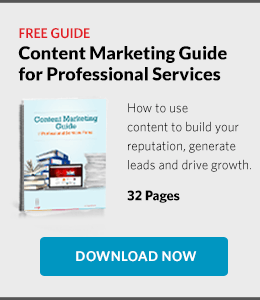In a previous post, I discussed the ways a professional writer could help firms craft clearer messaging to better connect with their target audiences. The post was well-received, but admittedly written for firms targeting native English-speaking audiences.
For a growing number of professional services firms, competition has expanded beyond their own geographic region. As firms continue to augment their services, capabilities, and office locations, they may also need to consider global competition—and global audiences.
At the international level, firms still struggle with perception gaps and will often lack insight into how buyers think. The solution—disseminating clear and concise messages—still applies. However, the nuances of crafting these messages become more important in the multi-lingual marketplace.
So what are globally-minded firms to do?
Here are three ways firms (and their writers) can craft messaging that maintains impact and relevancy—across borders.

Use International English. While English is the third most widely spoken language in the world, many multinational corporations have chosen it as their official language for business. There are various opinions—often steeped in decades of debate—surrounding the use of English over other more widely or commonly spoken languages. This post does not take sides in that debate, but suggests that professional services firms can use International English as one tool to reach international audiences.
International English (also referred to as Global English) 1) uses simple grammar, 2) features concise, short sentences, and 3) omits jargon and idiomatic phrases. Compose sentences in active voice and limit their length to 20-25 words or less. Following this guideline alone can help make your messaging much easier to understand.
Keep It Simple. Simplicity applies to both grammar and overall messaging. Avoid crafting “clever” or “humorous” messages. Neither concept translates very well and can sometimes be offensive or ill suited to more conservative audiences. Clear, direct language that communicates your expertise and value increases engagement.
Do Your Research. Diligently research the impact of cultural norms on business practices. The intersection of culture and business communications is common in the curriculum of many MBA programs. There are numerous books, business periodicals, and online resources to help you avoid common pitfalls and become a more conscientious global business citizen. Increase your general knowledge of cross-border business practices, but be sure to research the specifics of your target markets as well.
And the absolute best advice? Speak with an international business communications consultant to ensure that you are leveraging tactics that best suit your specific situation and goals.
There are many other factors to consider when crafting messaging for the international space, but this post covered some basic recommendations. I encourage you to find other resources to support your understanding. Afterwards, responsibly and confidently expand your business messaging reach—at home, and abroad.
Trouble bridging the buyer/seller gap? Hinge can help.
Hinge supports clients throughout North America and beyond by helping professional services organizations deliver the right messages to their target markets. Connect with us or reach out to chat. We’re happy to talk about how targeting messaging can benefit you.
Additional Resources
- Download Hinge’s Content Marketing Guide for Professional Services Firms for more tips on creating content that builds credibility and demonstrates expertise.
- Start effectively communicating with your buyers by understanding what they really care about. Download our free book, Inside the Buyer's Brain for research-based insights on the professional services buyer.
- Get a copy of our Online Marketing for Professional Services book to learn techniques that will generate more leads and increase awareness of your firm.

